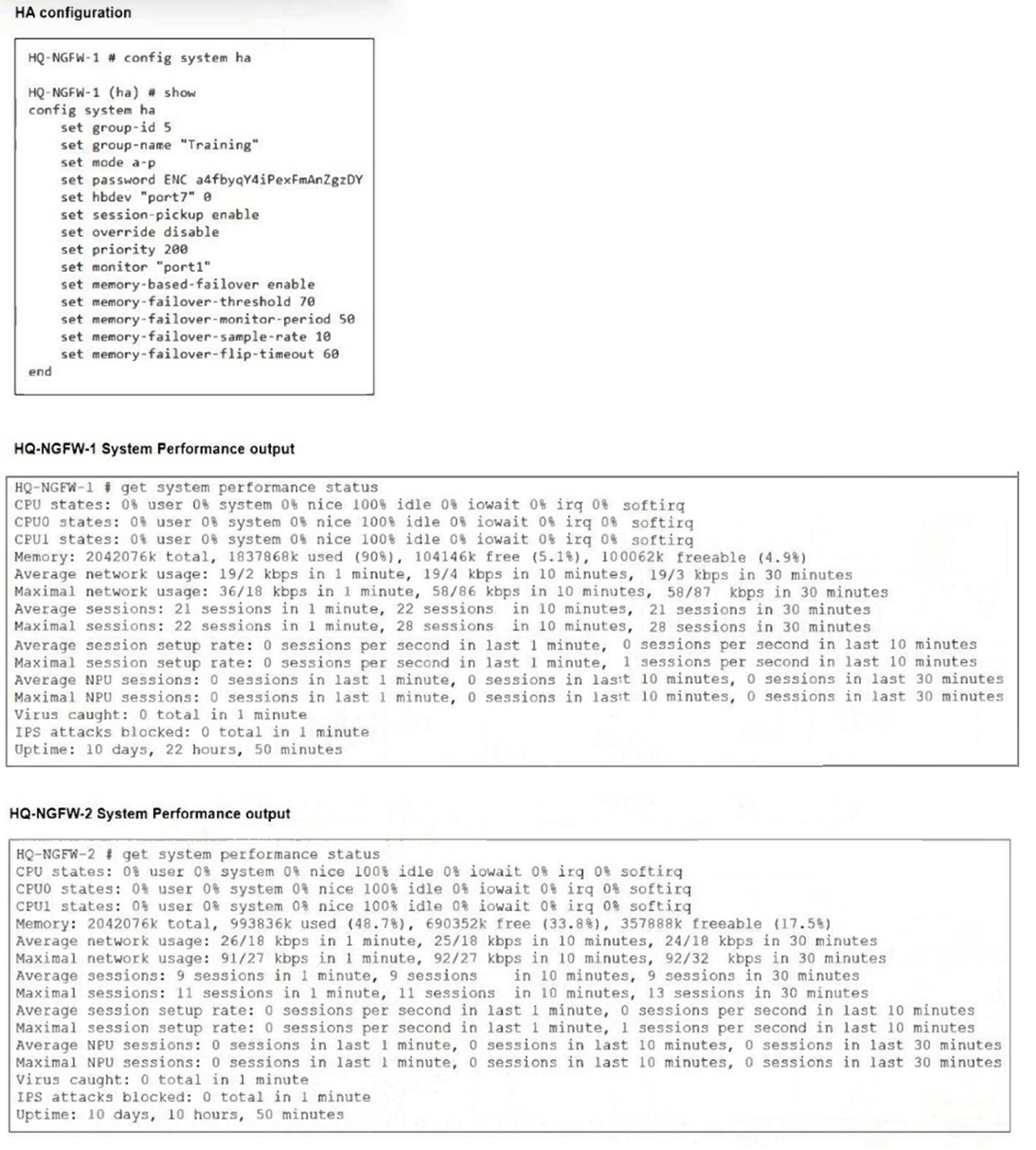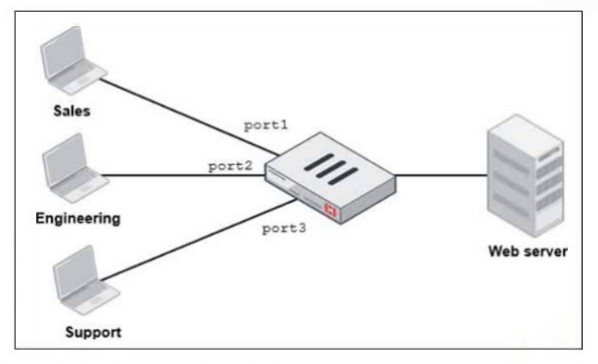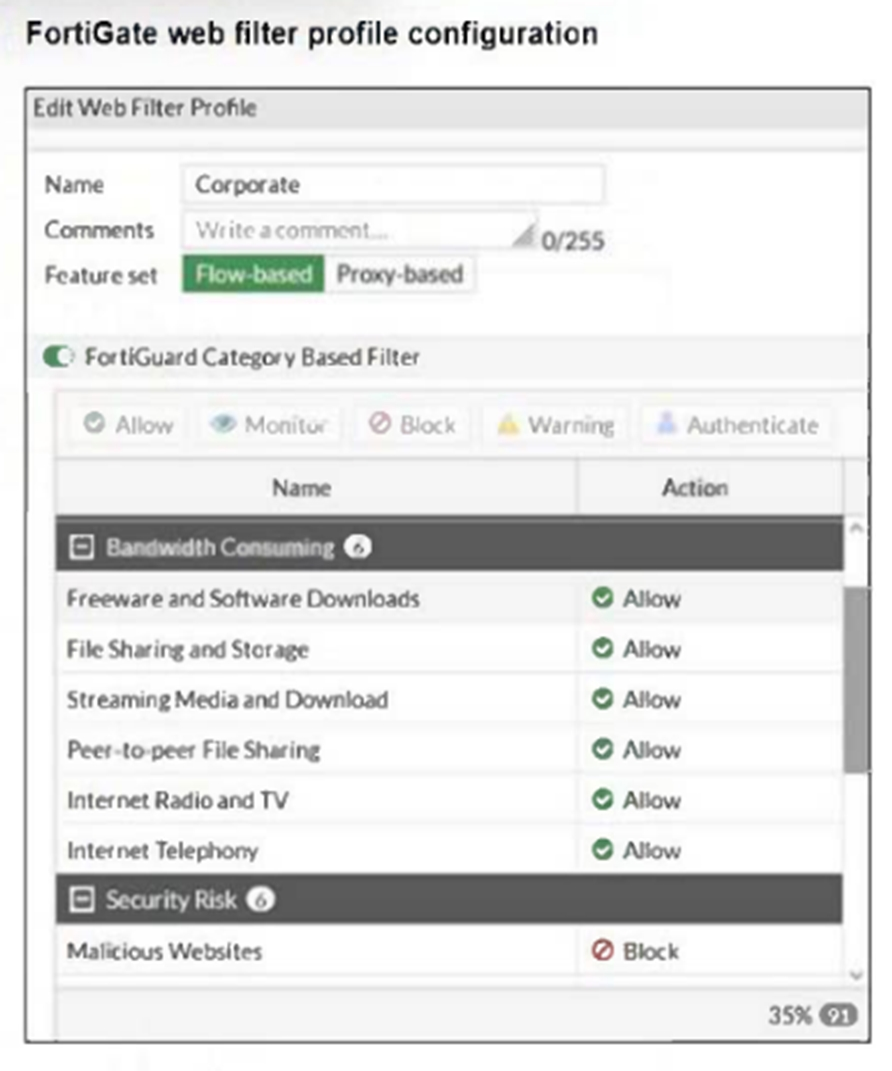Fortinet FCP - FortiGate 7.6 Administrator FCP_FGT_AD-7.6 Exam Practice Test
Which statement correctly describes NetAPI polling mode for the FSSO collector agent?
Answer : B
NetAPI polling mode involves frequent queries to domain controllers, which can cause increased bandwidth usage, especially in large networks with many login events.
Which three statements explain a flow-based antivirus profile? (Choose three.)
Answer : A, B, D
Flow-based antivirus buffers the entire file while simultaneously transmitting data to the client to minimize latency.
Flow-based inspection combines multiple scanning techniques from proxy-based modes for efficient detection.
Flow-based inspection provides better performance by processing traffic on the fly without full proxy overhead.
Refer to the exhibit, which shows a partial configuration from the remote authentication server.

Why does the FortiGate administrator need this configuration?
Answer : D
The Fortinet-Group-Name attribute is used to restrict authentication to users who belong specifically to the 'Training' user group on the RADIUS server.
Refer to the exhibits.

An administrator has observed the performance status outputs on an HA cluster for 55 seconds.
Which FortiGate is the primary?
Answer : D
The HA configuration shows that override is disabled (set override disable), but despite this, HQ-NGFW-1 has the higher priority (200) and is acting as the primary, as indicated by its higher resource usage and uptime. Override allows the device with higher priority to take over as primary, so HQ-NGFW-1 is the primary device.
Refer to the exhibit.

FortiGate has two separate firewall policies for Sales and Engineering to access the same web server with the same security profiles.
Which action must the administrator perform to consolidate the two policies into one?
Answer : D
Enabling Multiple Interface Policies allows you to select multiple interfaces (like port1 and port2) in a single firewall policy, consolidating access rules for both Sales and Engineering to the web server.
Refer to the exhibit.

The exhibit shows the FortiGuard Category Based Filter section of a corporate web filter profile.
An administrator must block access to download.com, which belongs to the Freeware and Software Downloads category. The administrator must also allow other websites in the same category.
What are two solutions for satisfying the requirement? (Choose two.)
Answer : A, C
Creating a static URL filter to block download.com specifically allows blocking that site without affecting the entire category.
Using a separate firewall policy with a Deny action for an FQDN address object matching download.com can also block the site while allowing others in the same category.
You have configured an application control profile, set peer-to-peer traffic to Block under the Categories tab, and applied it to the firewall policy. However, your peer-to-peer traffic on known ports is passing through the FortiGate without being blocked.
What FortiGate settings should you check to resolve this issue?
Answer : C
Network Protocol Enforcement settings control how FortiGate inspects and enforces protocols on traffic, including peer-to-peer applications on known ports. If not properly enabled, peer-to-peer traffic may bypass blocking despite the application control profile.